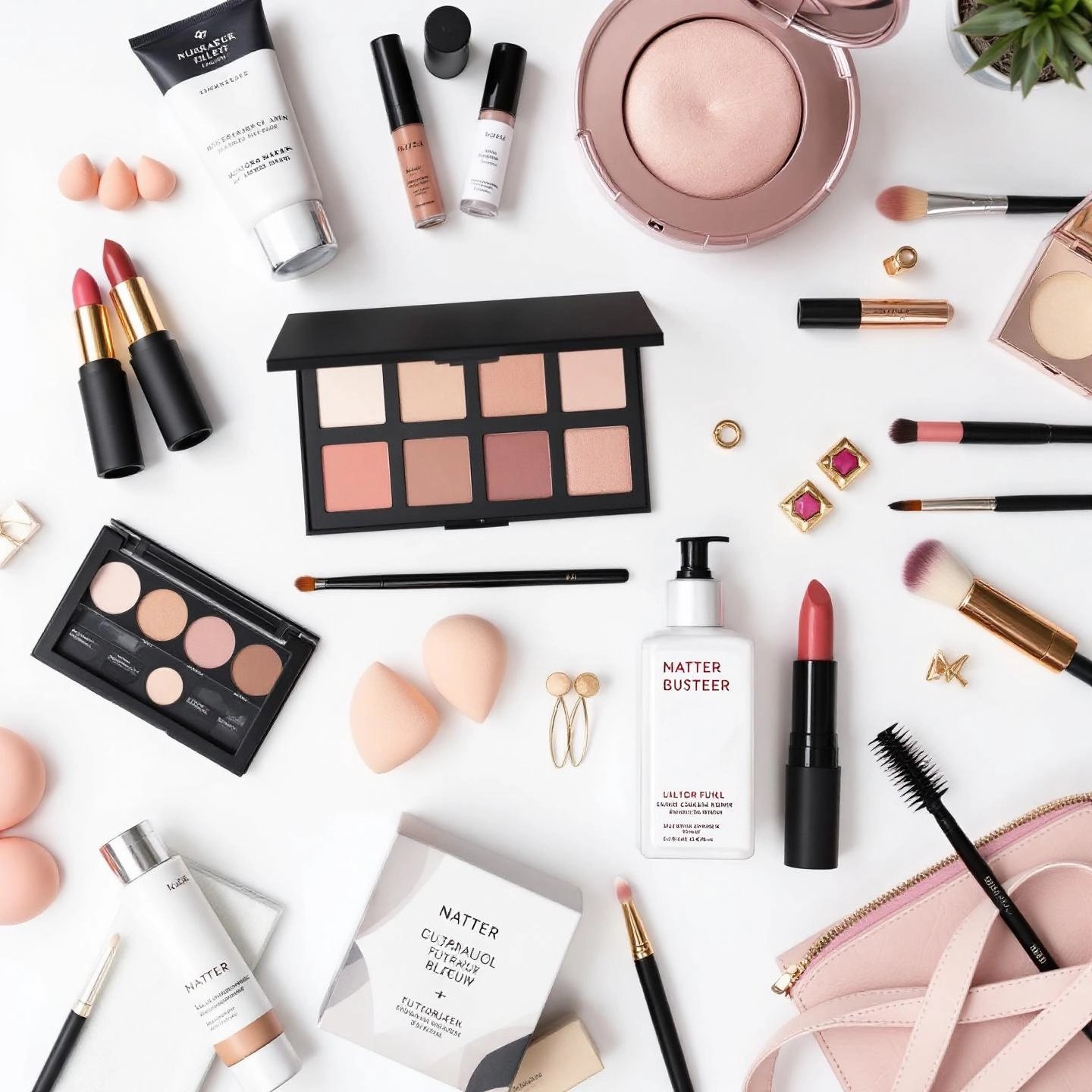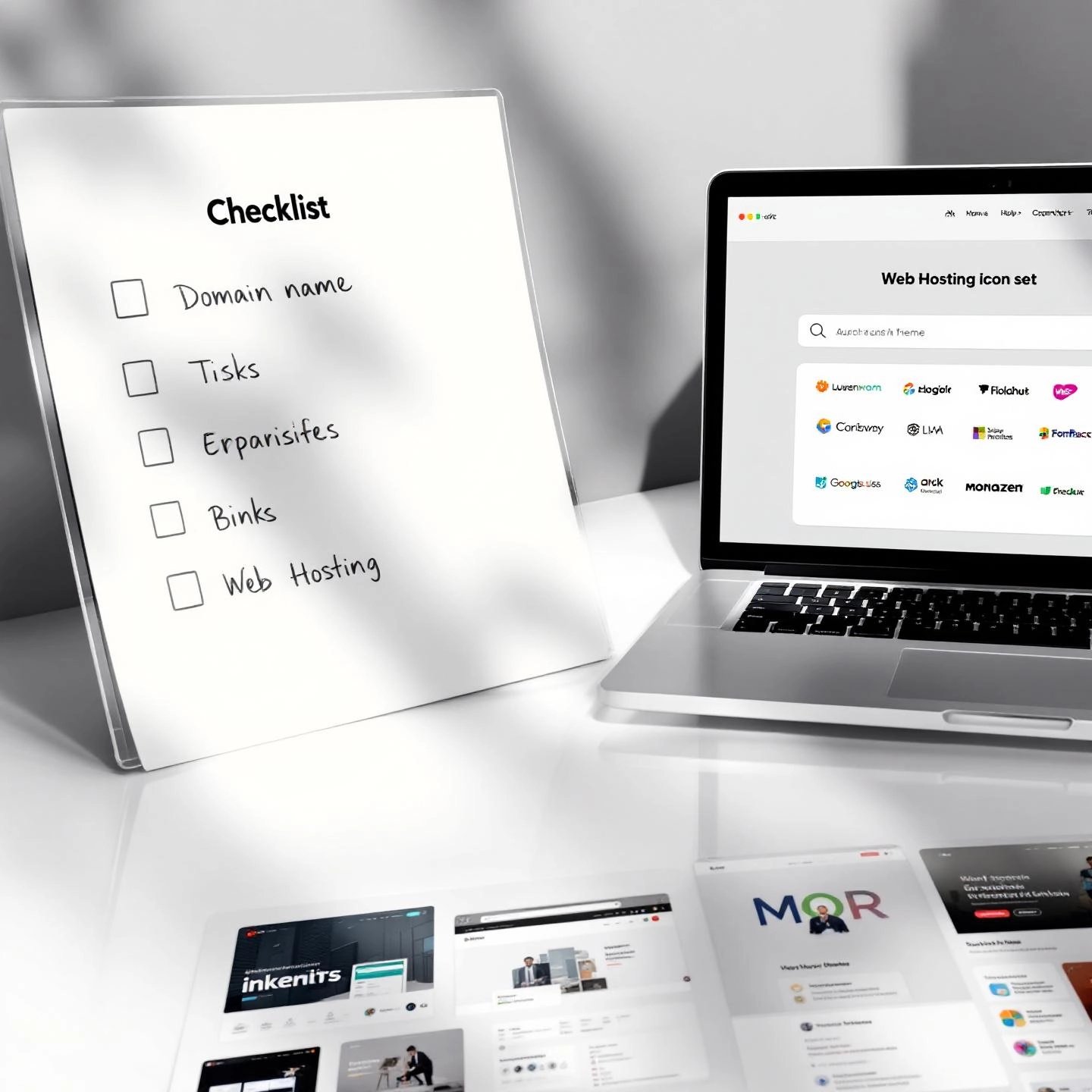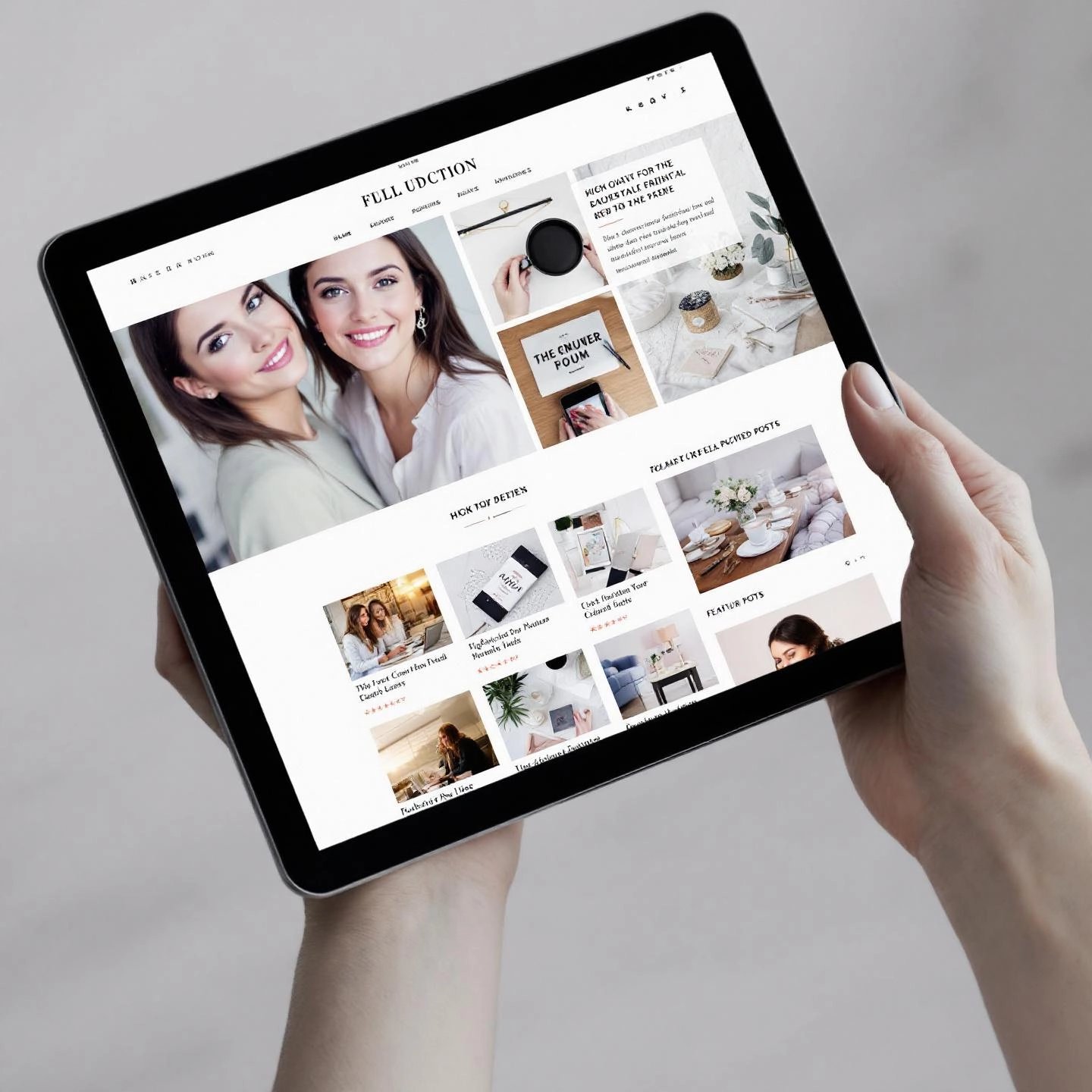Introduction to How to Start a Beauty Blog
When you think about the beauty industry, what comes to mind? Maybe it’s the latest skincare trends, makeup tutorials, or honest reviews of products you’ve been eyeing. Now, imagine having your own space to share those insights, connect with like-minded individuals, and even build a personal brand. That’s the real appeal of learning how to start a beauty blog—but what does it actually involve?
At its core, a beauty blog is more than just an online diary. It’s a platform where your passion for beauty can transform into expertise, influence, and, eventually, opportunity. Whether you’re interested in reviewing new products, demonstrating makeup techniques, or exploring the latest in skincare, your blog becomes a hub for your unique voice and perspective. But as you’ll quickly notice, the journey from idea to a thriving, monetizable blog is about more than enthusiasm—it’s a strategic process that rewards planning, consistency, and a commitment to quality.
Sounds complex? It can be, but breaking the process down into manageable steps makes it achievable for anyone with the drive to succeed. The beauty blogging world is vibrant and competitive, yet filled with opportunities for those who carve out a distinct space. To stand out, you’ll need to focus on three essential pillars:
- Strategy: Define your goals, target audience, and the unique angle that sets your blog apart. For example, are you passionate about cruelty-free cosmetics or budget-friendly skincare?
- High-Quality Content: Create posts that deliver real value—think in-depth product reviews, step-by-step tutorials, or trend analyses that help your readers solve problems and make informed choices.
- Consistency: Success comes from showing up regularly. A consistent publishing schedule not only builds trust but also helps your audience know when to expect fresh content.
So, how to start a beauty blog? It begins with setting realistic expectations. While some bloggers find quick wins, most see growth through persistence, learning, and genuine engagement with their audience. By following a structured roadmap, you can avoid common pitfalls and set yourself up for long-term beauty blog success.
This guide is designed to walk you through every stage—from finding your niche to establishing your brand and building a loyal community. If you’re ready to turn your passion into influence (and maybe even income), you’re in the right place. Let’s start this journey together and unlock the full potential of your beauty blog.

What Is a Beauty Blog Anyway?
When you hear the term “beauty blog,” what do you picture? Maybe a website filled with makeup reviews, or perhaps a collection of stunning before-and-after photos. But what is a beauty blog in today’s digital world? The answer is much broader—and more exciting—than you might think.
The Evolution of Beauty Blogs: From Diaries to Digital Brands
Not long ago, beauty blogs were mostly personal diaries. Bloggers like Keiko Lynn began by sharing daily routines, candid thoughts, and snapshots of their own style journeys. Over time, these online journals transformed into dynamic platforms that blend personal storytelling with expert advice, product reviews, and even business ventures.Today’s beauty blogs are powerful tools for building a brand, connecting with audiences, and influencing buying decisions. Some have grown into full-fledged businesses, complete with brand partnerships, affiliate marketing, and dedicated communities. As one beauty blogger put it, “I am my own brand, which can be great, but it can also be tricky.” The evolution from hobbyist to entrepreneur is now a well-traveled path for many in the beauty space (Google Web Creators).
The Most Common Types of Beauty Blogs
Wondering what kind of beauty blog you might want to start? Here are the main types you’ll see in the industry:
- Product Review Blogs: Focused on testing and reviewing makeup, skincare, haircare, and beauty tools. These blogs help readers make informed purchasing decisions by offering honest opinions and detailed analysis.
- Tutorial-Based Blogs: Centered around step-by-step guides, from makeup application to hair styling. If you love teaching and have a knack for breaking down complex looks, this format could be for you.
- Niche-Specific Blogs: These zoom in on a particular aspect of beauty, such as cruelty-free products, budget beauty, or even nail art. By specializing, bloggers can attract highly targeted audiences and establish themselves as authorities in their chosen field.
- Beauty & Fashion Blogs: These combine beauty content with fashion insights, offering readers a holistic take on personal style. Many of today’s top influencers started here, weaving together outfit ideas, skincare routines, and lifestyle tips.
Some blogs blend these categories, while others stick closely to one. For example, a blogger might start by reviewing products, then branch out into tutorials or fashion content as their audience grows and interests evolve.
Why Understanding the Types Matters
Recognizing the diversity within the beauty blogging space can help you clarify your own vision. Are you passionate about sharing the latest skincare breakthroughs? Do you love crafting easy-to-follow tutorials? Or do you see yourself building a brand that blends beauty with lifestyle advice? Knowing the possibilities is the first step to carving out your unique space in a crowded market.
So, how to start a beauty blog? Begin by exploring these types and thinking about where your interests and expertise align. This foundational decision will shape everything from your content strategy to the audience you attract. Next, we’ll dive into the importance of finding your unique niche—so you can stand out and thrive in the beauty world.
Finding Your Unique Niche in the Beauty World
Ever wondered why some beauty blogs skyrocket to success while others get lost in the crowd? The secret often lies in one word: niche. In a world overflowing with beauty content, carving out your own unique space is the fastest way to build a loyal audience and establish authority. If you’re asking yourself how to start a successful beauty blog, the answer begins with choosing a niche that’s both specific and aligned with your passion.
Why Niching Down Matters for Beauty Blog Success
It’s tempting to cover every beauty topic under the sun—makeup, skincare, hair, nails, and more. But here’s the catch: a broad approach makes it tough to stand out or become known for anything in particular. Instead, focusing on a well-defined niche helps you attract readers who are searching for exactly what you offer. You’ll notice that the most successful beauty bloggers—whether they’re sharing cruelty-free product reviews or nail art tutorials—are those who have honed in on a specialty (Blogging Her Way).
When you narrow your focus, you:
- Build authority faster by becoming the go-to resource in your area
- Attract a dedicated, engaged audience who trusts your expertise
- Make it easier to partner with brands and monetize your blog
- Streamline your content creation, making it less overwhelming
Sounds great, right? But how do you actually find the perfect niche for your beauty blog?
How to Find and Validate Your Beauty Blog Niche
Start by asking yourself a few key questions:
- What beauty topics am I most passionate about?
- Is there a specific audience or problem I want to help solve?
- Can I consistently create content on this topic?
- Is there demand (traffic and monetization potential) for this niche?
To make this process actionable, here’s a table showing how you can niche down from a broad beauty topic to a specialized focus:
| Broad Beauty Topic | Niche | Micro-Niche (Highly Focused) |
|---|---|---|
| Makeup | Budget-Friendly Makeup | Drugstore Makeup for Sensitive Skin |
| Skincare | Anti-Aging Skincare | Natural Anti-Aging Skincare for Women Over 40 |
| Haircare | Curly Hair Care | DIY Curly Hair Masks for Type 3 Curls |
| Nails | Nail Art Tutorials | Seasonal Nail Art for Beginners |
| Beauty Products | Cruelty-Free Beauty | Vegan, Cruelty-Free Skincare for Acne-Prone Skin |
As you can see, the more specific you get, the easier it becomes to define your audience and stand out. For instance, a blog dedicated to “DIY curly hair masks for type 3 curls” will attract a highly targeted group of readers who are actively searching for those solutions (The Penny Matters).
Pro Tip: Validate Your Niche for Profitability
Before you commit, do some market research to ensure your chosen niche has enough demand and monetization potential. Look at search volume, trending topics, and competitors. This is where content strategy experts can help by providing in-depth keyword research and market validation, ensuring you don’t invest time in a niche with little growth potential.
Still unsure? Explore beauty blog niche ideas like budget beauty, cruelty-free products, skincare for specific skin types, or even seasonal nail art. The possibilities are endless—just make sure your niche reflects both your passion and a real audience need.
Ready to move from idea to action? Next, we’ll take your chosen niche and walk through the technical steps of launching your beauty blog, so you can start building your online presence right away.

How Do I Start a Beauty Blog?
Ever wondered, "How do I start a beauty blog without feeling overwhelmed by the tech side?" You’re not alone. Many aspiring beauty bloggers are bursting with ideas, but the technical setup can feel like a hurdle. The good news? With the right checklist, you can launch your blog confidently—even if you’re not a tech expert.
Your Step-by-Step Beauty Blog Setup Checklist
Let’s break the process down into manageable steps. Think of this as the foundation for everything you’ll build next. Here are the core beauty blog setup steps:
- Choose Your Blogging PlatformThe platform is the engine behind your blog. For most beauty bloggers, self-hosted WordPress.org is the top choice. Why? It’s flexible, powerful, and you fully own your content. Platforms like Dorik or Wix offer ease of use and quick setup, but WordPress stands out for long-term growth and customization. If you’re new to web design, don’t worry—many hosts offer one-click installs or even pre-installed WordPress.
- Select a Domain NameYour domain is your online address (like yourbeautyblog.com). Pick a name that reflects your niche and is easy to remember. Use a domain name generator if you’re stuck for ideas, and always check availability before falling in love with a name. Short, memorable, and relevant domains work best.
- Set Up Web HostingHosting is where your website “lives” online. Reliable hosting ensures your blog loads quickly and is always accessible. Popular beginner-friendly hosts like Bluehost, Namecheap, and InMotion Hosting offer affordable plans and often include a free domain for the first year. If you want a seamless experience, look for hosts with WordPress pre-installed.
- Install WordPress and a Beauty ThemeOnce you’ve secured hosting, it’s time to install WordPress. Most hosting providers offer a one-click installation process. Afterward, choose a theme that matches your brand’s vibe. Free themes like Ashe or premium options from ThemeForest or StudioPress are popular with beauty bloggers. Your theme controls the look and feel of your blog, so pick one that’s visually appealing and easy to customize.
What About Plugins and Customization?
Plugins add extra features to your blog—think photo galleries, SEO tools, or email signup forms. Start with a few must-haves: image compression plugins (for faster load times), social sharing buttons, and an SEO plugin like Yoast. But remember, less is more; too many plugins can slow your site.
Facing Technical Roadblocks?
Sounds like a lot? You’re not alone if you find the setup daunting. Many bloggers choose to outsource the initial build or ongoing content management so they can focus on content and branding. This is especially common for those who want to hit the ground running with professional design and reliable performance.
How to start a beauty blog? It’s all about laying a strong technical foundation. Once your site is live, you’ll be ready to focus on what matters most: creating stunning, high-value content. Next, let’s explore the pros and cons of free versus paid platforms—so you can make the best decision for your goals and budget.
How to Start a Beauty Blog for Free vs. Paid Platforms
When you’re eager to share your beauty expertise with the world, you might wonder: should you launch your blog on a free platform or invest in a paid, self-hosted solution? The answer isn’t one-size-fits-all. Your decision will shape your blog’s growth, monetization potential, and professional image. Let’s break down the differences so you can confidently choose the best path for your goals.
Free vs. Paid Beauty Blog Platforms: What’s the Real Difference?
Imagine you’re deciding between renting a room or owning a home. Free blogging platforms—like WordPress.com, Blogger, Medium, or Tumblr—are like renting: easy to move in, no upfront cost, but with restrictions and less control. Paid platforms—most commonly self-hosted WordPress.org—are like home ownership: more setup, but you call the shots and reap the full benefits. Here’s a side-by-side comparison to help you see the trade-offs clearly:
| Feature | Free Platforms (e.g., WordPress.com, Blogger, Medium, Tumblr) | Paid/Self-Hosted Platforms (e.g., WordPress.org) |
|---|---|---|
| Cost | Free to start; often includes platform branding and ads | Domain & hosting fees (typically $2–$12/month); full control |
| Monetization | Limited; platform may restrict ads, affiliate links, or sponsorships | Full monetization options: display ads, affiliates, sponsored posts, products |
| Customization | Basic; limited themes, plugins, and design flexibility | Extensive; thousands of themes and plugins, advanced design control |
| Brand Ownership | Platform owns your domain (e.g., yourblog.platform.com); less authority | You own your domain (e.g., yourbeautyblog.com); builds brand credibility |
| Professionalism | Perceived as entry-level or hobbyist | Professional look; trusted by brands and readers |
| SEO & Growth | Limited SEO tools; harder to transfer authority if you move | Robust SEO plugins; full control over growth and migration |
| Support & Scalability | Basic support; limited room for expansion | Community support, scalability, and integrations for future growth |
Which Option Fits Your Beauty Blog Vision?
If you’re testing the waters, learning the ropes, or treating your blog as a casual hobby, starting on a free platform makes sense. Platforms like Medium and Tumblr are great for quick setup and tapping into built-in audiences, but you’ll face limits on branding and monetization.
However, if you’re serious about building a beauty brand, growing your audience, and earning income, investing in a paid, self-hosted platform is the smarter move. Not only do you gain complete control over your content and design, but you also unlock every monetization opportunity and project a professional image—key for attracting partnerships and loyal followers.
Key Takeaway
How to start a beauty blog? Begin by weighing your long-term goals against the pros and cons of each platform. Free platforms are low-risk and easy for beginners, but paid/self-hosted solutions set you up for true growth and authority in the beauty industry.
Ready to make your choice? Once you’ve picked your platform, the next step is designing a visually stunning blog that captures your brand’s essence and delights every visitor. Let’s explore how to make your beauty blog stand out visually.

Designing a Visually Stunning Blog
When you land on a beauty blog, what’s the first thing you notice? Chances are, it’s the look and feel—the colors, the images, and the overall vibe. In the beauty world, design isn’t just about making things pretty; it’s about building trust, showcasing your expertise, and giving readers a reason to stay. If you’re wondering how to create a beautiful blog that stands out, start by focusing on the visual experience from the very first click.
Why Aesthetics Matter in Beauty Blogging
Imagine browsing a beauty site that’s cluttered, slow to load, or filled with grainy photos. Would you trust their product recommendations? Probably not. Research shows that nearly 40% of users abandon slow-loading websites, and over a third leave sites they find unattractive or hard to navigate. In an industry all about appearance and confidence, your blog’s design directly shapes your credibility and brand perception.
But it’s not just about first impressions. A visually appealing blog encourages visitors to explore, read more, and come back for updates. It’s the foundation for building a loyal community that values your insights and recommendations.
Essential Principles for Beauty Blog Design
Ready to make your blog as stunning as your content? Here are four proven beauty blog design tips to help you create a space readers will love:
- High-Quality PhotographyIn the beauty niche, images speak louder than words. Invest in clear, well-lit photos for product reviews, tutorials, and featured posts. Use original images whenever possible—stock photos rarely capture the authenticity beauty audiences crave. Top beauty sites showcase products with close-ups, swatches, and real-life results to build trust and inspire action.
- Consistent BrandingThink of your blog as your digital signature. Choose a color palette and a set of fonts that reflect your personality and niche. Use these design elements consistently across your site, from your logo to your headings and buttons. Consistency makes your brand memorable and signals professionalism.
- Clean and Uncluttered LayoutLess is more—especially when you want your content and images to shine. Opt for a simple, organized layout with plenty of white space. Avoid cramming too many elements onto your pages. A clean design not only looks modern but also helps visitors focus on your message and navigate with ease.
- Mobile-First DesignMore readers are browsing on phones than ever before. Make sure your blog looks and works great on all devices. Use responsive templates, test your site on different screens, and prioritize fast load times. Mobile-friendly design isn’t just a nice-to-have—it’s essential for reaching today’s beauty audience (HTMLBurger).
Real-World Inspiration: What Top Beauty Blogs Do Right
Want to see these principles in action? Top beauty brands like Glossier and Dominique Cosmetics use minimalist layouts, cohesive color schemes, and interactive features to immerse visitors in their brand story. They highlight user reviews, integrate Instagram feeds, and use motion graphics or videos to keep things lively and engaging. Even small touches—like a well-designed About page or prominent social media buttons—can make your blog feel more welcoming and professional.
Quick Checklist: How to Create a Beautiful Blog
- Pick a signature color palette and stick to it
- Use web-safe, easy-to-read fonts
- Feature original, high-resolution photos in every post
- Organize your navigation for quick access to key topics
- Highlight popular or featured posts to guide new readers
- Include social links and a compelling About page
How to start a beauty blog? Focus on aesthetics as much as content. A visually stunning blog doesn’t just look good—it builds trust, encourages engagement, and sets the stage for long-term growth. Next, we’ll dive into how to craft your first must-read content pieces so your design and writing work hand in hand to attract and retain readers.
Creating Your First Pieces of Must-Read Content
When your beauty blog is finally live and looking stunning, you might be wondering, “What should I write about first?” Or maybe you’re worried about how to stand out in a sea of beauty bloggers. The secret? Focus on creating high-value, strategic content that solves real problems for your audience and keeps them coming back for more. Let’s break down how to approach this essential phase and why it’s the most time-consuming—but rewarding—part of your blogging journey.
Why Content Is the Heartbeat of Your Beauty Blog
Imagine landing on a beauty blog that’s visually perfect but offers nothing new or helpful. Would you return? Probably not. In the beauty niche, your authority and influence are built on the quality, relevance, and originality of your content. This is where your blog truly comes to life, establishing you as a trusted voice and attracting organic traffic from search engines and social media alike.
How to Start a Beauty Blog? Build with Pillar Content
To set yourself up for beauty blog success, start with pillar content: in-depth, evergreen articles that address your readers’ biggest questions and pain points. These posts become the foundation of your blog, driving traffic and building trust over time. Think of them as your signature guides—pieces that you’ll reference, update, and promote again and again.
| Pillar Content Checklist | Why It Matters | Beauty Blog Content Ideas |
|---|---|---|
| Problem-Solving Focus | Addresses real audience pain points and provides actionable solutions | "How to build a personalized skincare routine", "Best makeup for sensitive skin" |
| Keyword Research | Targets relevant, high-traffic search terms to boost visibility | "Natural anti-aging skincare", "Drugstore foundation reviews" |
| Compelling Headlines | Captures attention and encourages clicks from both search and social | "10 Beauty Mistakes You Didn’t Know You’re Making", "Ultimate Guide to Vegan Beauty Products" |
| Engaging Introductions | Hooks the reader and sets clear expectations for value | Start with a relatable scenario or question, e.g., “Ever wondered why your foundation won’t last all day?” |
| Clear Calls-to-Action | Guides readers to comment, subscribe, or share—building community | "Share your favorite skincare hack below!", "Subscribe for weekly beauty tips" |
Where to Find Inspiration for Your Content
- Audience Research: Survey your readers or followers to discover their most pressing beauty questions and interests.
- Competitor Analysis: Explore what leading beauty blogs are covering, then offer a fresh angle or fill in gaps with your unique expertise.
- Social Media Trends: Monitor Instagram, TikTok, and YouTube for trending beauty topics and viral challenges you can cover or expand upon.
- FAQ and How-To Guides: Address frequently asked questions, beginner tutorials, and product comparisons—these are always in demand.
Types of Content That Drive Growth
- In-depth tutorials (e.g., “Step-by-Step Guide to Flawless Foundation”)
- Product reviews and roundups (“Top 10 Cruelty-Free Mascaras”)
- Personal stories and transformations (“My Journey to Clear Skin”)
- Expert interviews and guest posts
- Seasonal trend reports and buying guides
Consistency and Professionalism: The Real Challenge
Here’s the truth: consistently producing high-value, SEO-optimized pillar content for beauty blogs is the most demanding part of running a successful blog. It requires time, research, creativity, and technical know-how—especially if you want to rank well and keep your content fresh. That’s why many individuals and brands choose to outsource this task to professional services like BlogSpark, ensuring a steady stream of expertly crafted articles that engage readers and drive results.
If you find yourself overwhelmed by the ongoing content grind, remember that delegating to a trusted content partner can free up your time for strategy, branding, and audience engagement—ultimately accelerating your path to beauty blog success.
Ready to turn your ideas into must-read posts? In the next section, we’ll explore the best strategies to monetize your beauty blog and transform your passion into a profitable business.
How to Monetize a Beauty Blog Effectively
Imagine pouring your heart into your beauty blog—sharing honest reviews, tutorials, and tips—only to wonder, "Can I really make money from this?" The good news: yes, you absolutely can. But here's the catch—monetization is not an overnight process. It's built on a solid foundation of traffic and trust. The more readers you attract and the stronger your relationship with them, the more opportunities you'll have to turn your passion project into a profitable business. So, how to monetize a beauty blog in a way that feels authentic and sustainable? Let's break down the most effective methods, backed by real-world examples and actionable tips.
The Core Monetization Methods for Beauty Bloggers
- Affiliate MarketingAffiliate marketing is one of the most popular ways to make money from beauty blogging. You recommend products—like makeup, skincare, or hair tools—and earn a commission every time a reader makes a purchase through your special link. For beauty bloggers, programs like Amazon Associates, Sephora, or niche skincare brands offer a range of products to promote. The key is to focus on products you genuinely love and that solve problems for your audience. Transparent disclosures and authentic reviews help build trust and boost conversions. For example, if you write a detailed review of a cruelty-free moisturizer and include your affiliate link, you can earn each time a reader buys it based on your recommendation.
- Sponsored Posts & Brand CollaborationsAs your blog grows, brands may approach you to feature their products in dedicated posts, tutorials, or social media campaigns. Sponsored content can be highly lucrative, especially if you have a loyal, engaged audience in a specific niche. You set your rates, define your editorial guidelines, and ensure that any collaboration aligns with your brand values. Many beauty bloggers also accept guest posts or backlinks for a fee, but always prioritize quality and relevance to maintain your blog's credibility.
- Display AdvertisingDisplay ads (like Google AdSense or Mediavine) offer a passive way to monetize your blog. Once your site reaches a certain traffic threshold (usually 10,000+ monthly visitors), you can join ad networks that place relevant ads on your site. The more visitors you have, the more you earn—typically on a per-thousand-views basis. The trade-off? Too many ads can disrupt the user experience, so balance is key. Place ads in sidebars or footers to keep your content front and center (Get Lasso).
- Selling Digital or Physical ProductsReady to take full ownership of your income? Consider creating and selling your own digital products—like eBooks, beauty guides, printable checklists, or even online courses. Digital products are attractive because you keep all the profits and can sell them indefinitely after the initial creation. If you’re feeling ambitious, you can also launch your own line of physical products or branded merchandise using print-on-demand services. This approach requires more upfront work (think product design, fulfillment, and customer service), but it also offers higher profit margins and deeper brand loyalty.
Other Monetization Opportunities
- Consulting and Coaching: As an established beauty expert, you can offer personalized advice, virtual consultations, or coaching sessions for a fee. This works best if you’ve built a reputation for specialized knowledge, such as skincare routines for sensitive skin or makeup for special occasions.
- Email Marketing: Building an email list allows you to promote affiliate offers, digital products, or exclusive deals directly to your most engaged readers. Many successful bloggers use lead magnets—like free beauty checklists or mini-guides—to grow their list and nurture repeat customers.
Tips for Maximizing Your Beauty Blog Income
- Diversify Your Revenue Streams: Don’t rely solely on one monetization method. Combining affiliate marketing, sponsored posts, and your own products helps protect your income if one stream slows down.
- Focus on Audience Engagement: The more you interact with your readers—through comments, polls, or social media—the more likely they are to trust your recommendations and return for more.
- Be Patient and Persistent: It can take months (or longer) to see significant income, especially if you’re starting from scratch. Consistent publishing and audience-building are the keys to long-term success.
How to start a beauty blog? Once your content is attracting visitors and building trust, you’re ready to explore these monetization strategies. Remember, every successful beauty blogger started with a single post and a passion for helping others. With the right approach, your blog can become both a creative outlet and a sustainable business. In the next section, we’ll look at how to expand your brand across platforms like Instagram and YouTube, amplifying your reach and unlocking even more growth opportunities.

Expanding Your Brand on Instagram and YouTube
Ever wondered why some beauty blogs seem to explode in popularity while others stay hidden? The secret often lies in how well they amplify their message across social media. Your blog is the heart of your brand—where in-depth content lives and SEO brings in new readers. But if you want to build a vibrant community and reach a wider audience, extending your presence to platforms like Instagram and YouTube is essential. Let’s break down how to start a beauty blog on Instagram and how to start a beauty blog on YouTube, turning your core content into a multi-channel powerhouse.
Instagram: Visual Storytelling and Daily Engagement
Instagram is the beauty industry’s visual playground. If you’re ready to showcase your looks, share product reviews, and connect with followers in real time, Instagram should be your go-to extension. But how do you make your beauty blog stand out here?
- Choose a Cohesive Profile Name: Pick a handle that matches your blog and is easy to remember. Consistency across platforms helps followers find you everywhere (Jean Madeline).
- Tell a Story with Every Post: Decide on your account’s focus—makeup tutorials, product reviews, or client transformations. Stick to your theme so followers know what to expect.
- Develop a Visual Theme: Use a consistent color palette, similar framing, or the same filter for all posts. This creates a recognizable brand look and makes your feed instantly identifiable.
- Post Consistently: Aim for at least every other day. Use a content calendar to plan ahead, ensuring your feed stays fresh and relevant.
- Engage with Your Audience: Don’t just post—interact! Respond to comments, answer DMs, and use interactive features like Stories, polls, and question stickers to spark conversation.
- Leverage Hashtags and Stories: Research industry and local hashtags to reach your target audience. Create your own branded hashtag and encourage clients to use it, building a sense of community.
YouTube: In-Depth Tutorials and Building Trust
YouTube is where beauty brands and creators build deep, lasting connections. It’s the platform for detailed tutorials, honest reviews, and engaging behind-the-scenes content. Here’s how to start a beauty blog on YouTube and maximize its impact:
- Focus on Tutorials and Demonstrations: Show how products work, share step-by-step makeup routines, and offer tips that solve real beauty problems. Video lets viewers see results in action, building trust and authority.
- Share Authentic Reviews and Stories: Product reviews, testimonials, and personal experiences resonate with viewers and influence purchase decisions.
- Engage with Your Community: Respond to comments, host Q&A sessions, and encourage user-generated content or challenges. Community-building is key to long-term growth.
- Stay Consistent and On-Trend: Upload on a regular schedule and tap into trending topics or seasonal looks to stay relevant and increase discoverability.
- Optimize for Search: Use strong titles, descriptions, and tags to help your videos surface in YouTube and Google searches. Link back to your main blog for deeper dives and resource downloads.
Why Multi-Platform Strategy Matters—and How to Manage It
Sounds complex? It can be. Managing a blog plus active Instagram and YouTube channels means juggling content calendars, brand messaging, and audience engagement across multiple fronts. Repurposing blog content for each platform—turning a step-by-step guide into a video tutorial or an Instagram carousel—maximizes your reach without doubling your workload.
If you want a cohesive, professional presence but feel overwhelmed by the demands of multi-channel content, consider partnering with a content service like BlogSpark. They can help you strategize, repurpose, and schedule content so your brand voice stays strong everywhere you show up. How to start a beauty blog? By making your blog the hub and letting social platforms amplify your message, you’ll build a loyal community and open new doors for growth. Up next, we’ll tie it all together with actionable next steps for launching your successful beauty blog.
Conclusion
When you think about launching your beauty blog, does it feel exhilarating—or a bit overwhelming? You’re not alone. The journey from idea to thriving digital brand is filled with both creative excitement and practical challenges. But with the right approach, you can start a beauty blog professionally and set yourself up for long-term success. Let’s recap the key pillars that will help your blog flourish and outline your actionable next steps.
Key Pillars for Beauty Blog Success
- Define Your Niche: The most successful beauty blogs begin with a clear, focused niche. Whether it’s cruelty-free skincare, budget-friendly makeup, or curly hair care, honing in on a specialty helps you attract a loyal, engaged audience. As experts suggest, “Defining your niche will not only help you attract a targeted audience but also set you apart from other beauty bloggers” (Yellowbrick).
- Build a Professional Website: Your blog’s platform is the foundation of your brand. Invest in a professional, mobile-friendly website that reflects your aesthetic and makes navigation easy for readers. A well-designed site instantly boosts your credibility and signals to brands and followers that you’re serious about your work.
- Focus on Visual Appeal: In the beauty space, looks matter. Use high-quality photography, consistent branding, and a clean layout to create a memorable first impression. Remember, a visually stunning blog builds trust and keeps visitors coming back for more.
- Deliver Consistent, High-Value Content: Content is the heartbeat of your blog. Aim for a steady flow of engaging posts—think tutorials, reviews, and industry insights—that solve real problems for your readers. Consistency not only builds authority but also keeps your audience engaged and coming back for more.
- Engage and Grow Your Community: Respond to comments, ask questions, and encourage feedback. Building a sense of community transforms casual readers into loyal fans and opens doors for collaboration and monetization.
Your Professional Roadmap: Turning Passion into Results
Ready to make your mark? Here’s a simple, actionable checklist to help you start a beauty blog professionally:
| Action Step | Why It Matters |
|---|---|
| Clarify Your Niche & Audience | Attracts loyal readers and sets your blog apart |
| Secure a Memorable Domain & Hosting | Builds your brand’s foundation and professionalism |
| Design Your Blog with Visual Consistency | Enhances trust and user experience |
| Develop a Strategic Content Plan | Drives organic traffic and keeps readers engaged |
| Leverage Social Media for Growth | Expands your reach and builds community |
| Monitor Trends & Update Regularly | Keeps your content fresh and relevant |
Why Professional Support Accelerates Your Journey
Sounds like a lot to juggle? It can be—especially as your blog grows and opportunities multiply. Many successful bloggers reach a point where content creation, SEO, and strategy demand more time than they can give. That’s where a partner like BlogSpark can make all the difference. By handling everything from keyword research and content writing to optimization and publishing, BlogSpark frees you to focus on being the creative force and face of your brand. Imagine having an expert team ensuring your blog always delivers fresh, SEO-optimized articles—without sacrificing your unique voice or vision.
How to start a beauty blog? It’s about combining passion with a professional strategy, smart tools, and a willingness to learn and adapt. Whether you’re just starting out or ready to scale, the journey is yours to shape. Embrace the process, celebrate each milestone, and don’t hesitate to seek expert help when you’re ready to accelerate your growth.
Your beauty blog could be the next trusted voice in the industry. Take your first step today—and let your expertise, creativity, and community shine.
Frequently Asked Questions About Starting a Beauty Blog
1. Do beauty blogs make money?
Yes, beauty blogs can generate income through several methods such as affiliate marketing, sponsored posts, display ads, and selling digital or physical products. Monetization success depends on building a loyal audience and establishing trust, which opens up opportunities for partnerships and product sales. Many bloggers diversify revenue streams for stability and growth.
2. How do you start a beauty blog?
To start a beauty blog, define your niche, choose a blogging platform (like self-hosted WordPress), secure a memorable domain, set up reliable hosting, and select a theme that matches your brand. Focus on creating high-quality, value-driven content and use social media to expand your reach. Consistency, clear branding, and a strategic content plan are key for growth.
3. Is beauty a good niche for blogging?
Beauty is a highly popular and profitable blogging niche due to strong consumer interest in skincare, makeup, and personal care. By focusing on a specific niche within beauty, such as cruelty-free products or skincare for sensitive skin, you can attract a dedicated audience and stand out in a competitive market.
4. What do beauty bloggers do?
Beauty bloggers create and share content about makeup, skincare, haircare, and related topics. They review products, publish tutorials, offer tips, and often build communities on platforms like Instagram and YouTube. Over time, many also collaborate with brands, monetize their content, and become influential voices in the beauty industry.
5. What are the key steps to make a beauty blog successful?
Success in beauty blogging comes from defining a clear niche, building a professional and visually appealing website, consistently publishing high-value content, and engaging with your audience across multiple platforms. Leveraging tools like BlogSpark can streamline content creation, SEO, and strategy, helping you grow faster and focus on your unique brand voice.




